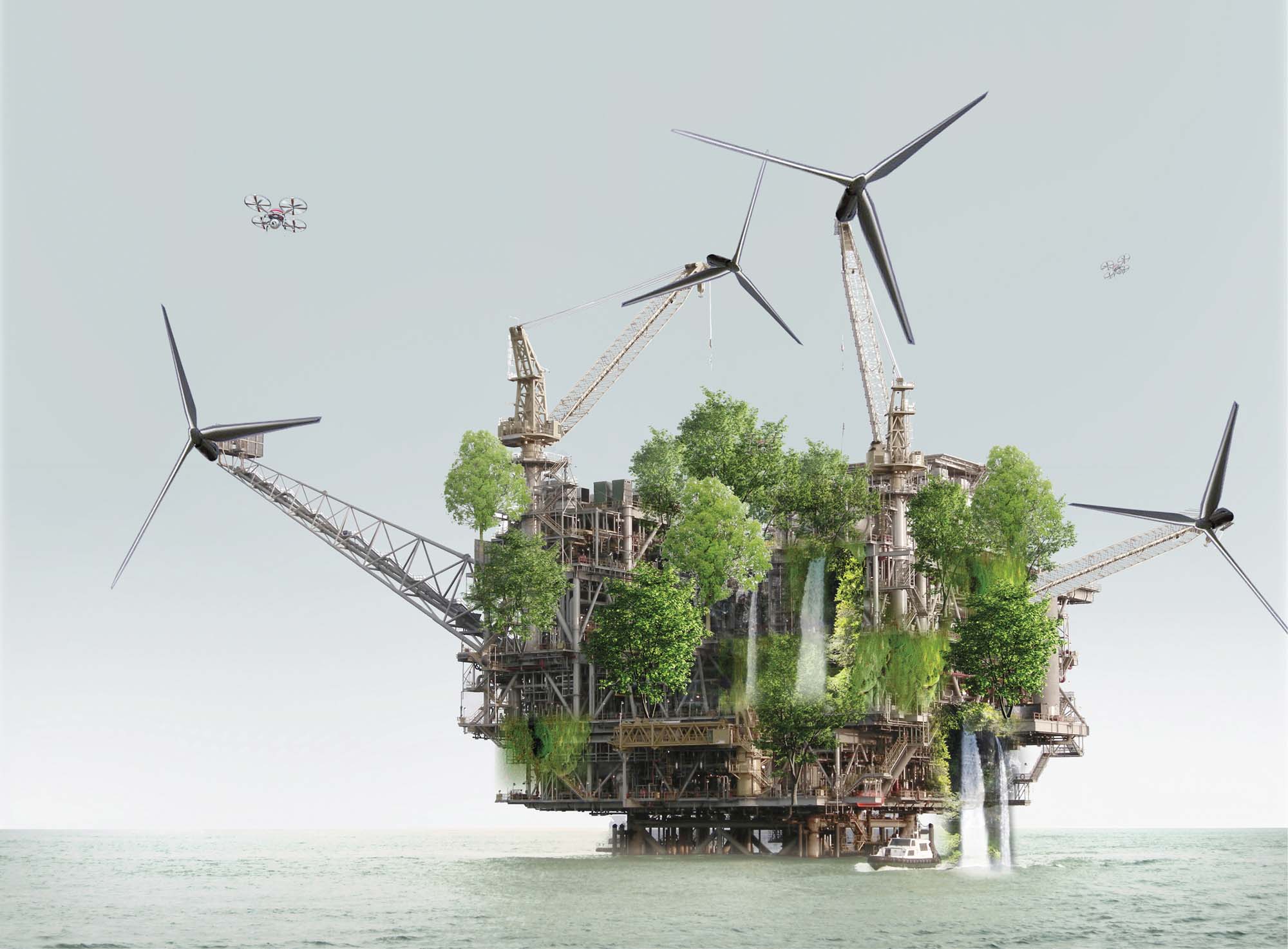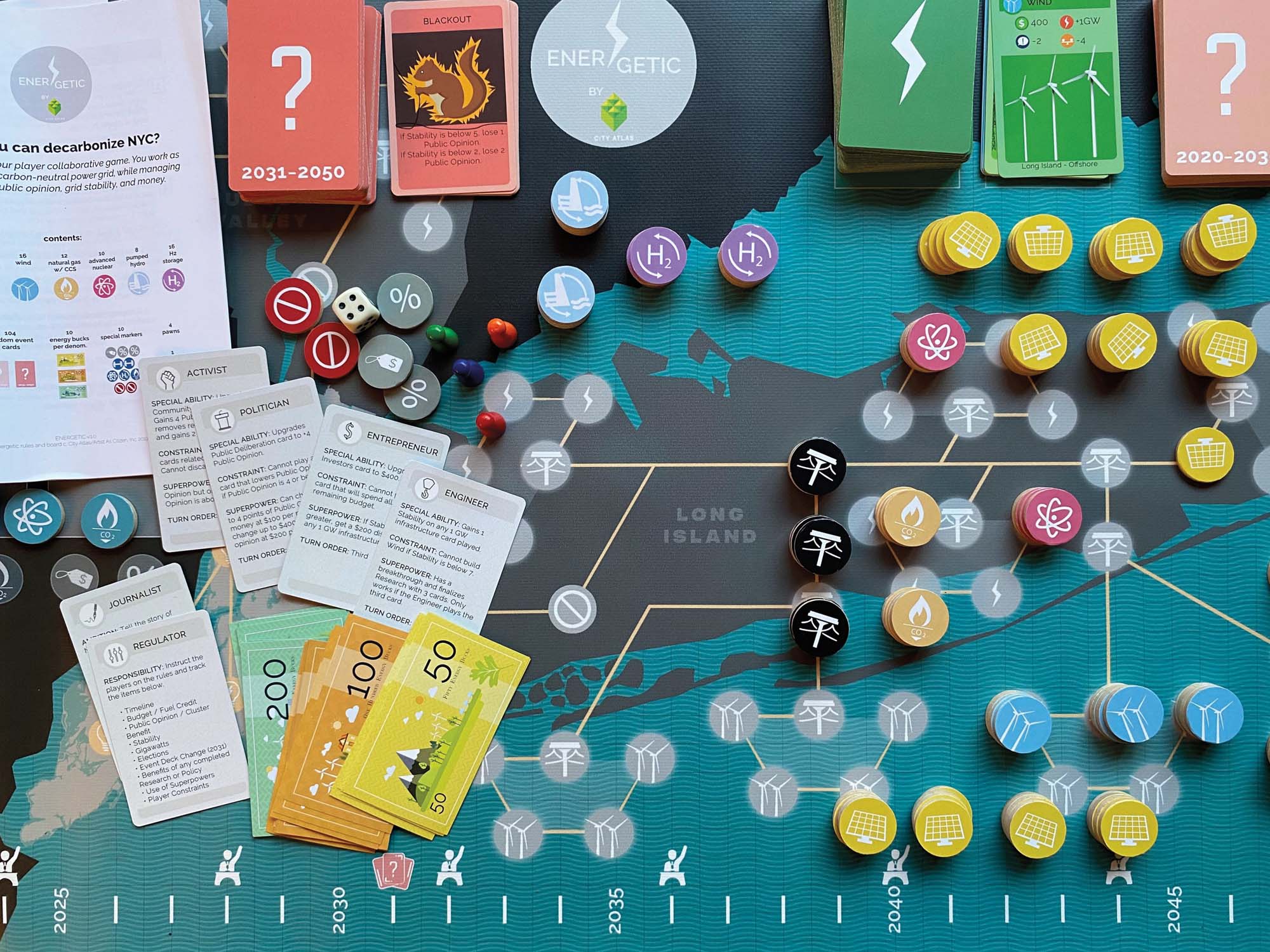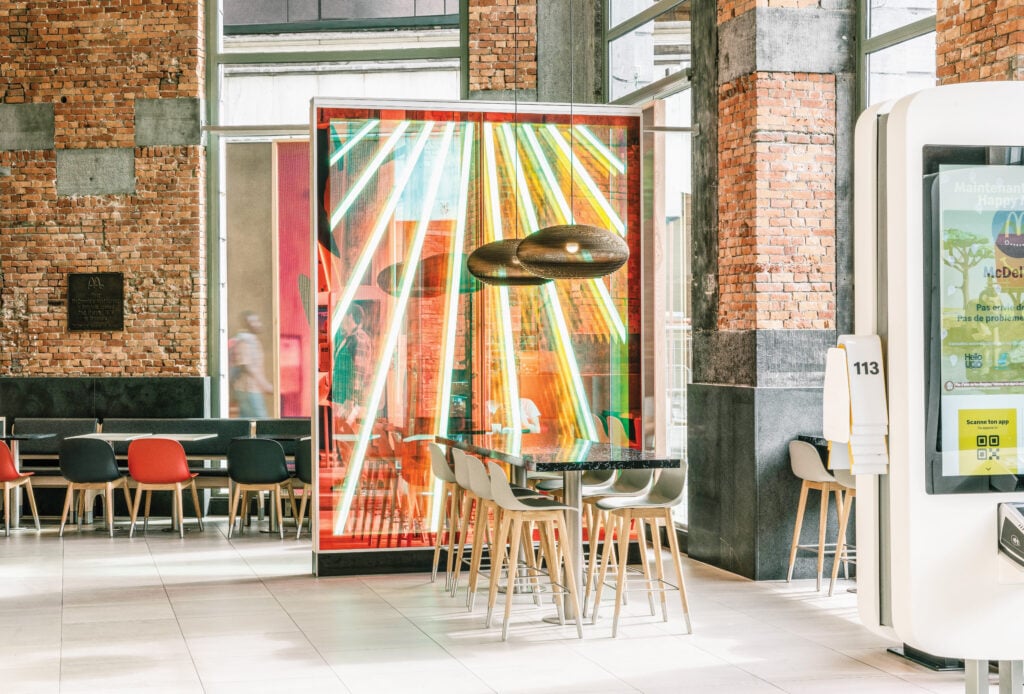
April 9, 2024
Finding Beauty in Climate Futures
“If we can’t imagine possible climate futures, we can’t create them. This is design’s time to shine.”
Dr. Ayana Elizabeth Johnson
The show hoped to bypass the gloom and doom that often accompanies visions of Earth’s future. Dr. Johnson said in a recent panel discussion at Pioneer Works: “If we can’t imagine possible climate futures, we can’t create them. This is design’s time to shine.” The following exhibitions, initiatives, and books do just that.
Transform! Designing the Future of Energy
A current Vitra Design Museum exhibition curated by Jochen Eisenbrand, Transform! Designing the Future of Energy explores how design can assist us in our transition to renewable energy sources while reducing our energy consumption. The show highlights innovative products, graphic and speculative design, as well as architectural prototypes, scale models, and films made especially for the exhibition, from Bell Labs’ first photovoltaic cell to advances in turbine technology.
Spanning four thematic galleries, the themes of the show include the individual’s role within the political tapestry of energy, the devices that shape our interactions with power, and design solutions for sustainable buildings and transportation. One gallery, titled “Future Energyscapes,” presents visionary designs from Carlo Ratti’s Hot Heart concept for Helsinki to Honglin Li and XTU Architects’ X Land proposal for turning offshore oil platforms into holiday resorts or ocean plastic waste incineration plants. Overall, the exhibition aims to challenge perceptions of what a just energy transition might look like, inviting visitors to ponder solar artist Marjan van Aubel’s query, “Why can’t energy be beautiful too?“

Climate Inheritance
Research practice DESIGN EARTH’s recent book Climate Inheritance (Actar, 2023) opens with a quote from Superstudio: “To salvage in order to destroy; to destroy in order to save yourself—in times of apocalypse, extremes meet, and opposites equalize.” Alongside a photomontage of a flooded Florence Duomo, DESIGN EARTH founders Rania Ghosn and El Hadi Jazairy familiarize the reader with Superstudio’s 1972 “Salvages of Italian Historic Centers,” in which the Italian radical design collective proposed a “strategic sabotage” of six iconic Italian cities, mining disaster and destruction to access other architectural possibilities. It is within this context that Ghosn and Jazairy’s book analyzes various climate risks—from rising sea levels to community displacement—by visualizing how each would affect World Heritage Sites.
Climate Inheritance is filled with evocative collages that illustrate how “paper architecture can draw out the speculative opportunities of heritage as an architectural figure of recursive thinking.” The volume also features thought-provoking essays by scholars David Gissen, Lucia Allais, Colin Sterling, and Rodney Harrison. By considering heritage sites as narratives of collective memory, Ghosn proposes, “A World Heritage site could, for the time of a story, stand for the world, which itself stands for all that is being destroyed by the changes in the climate.”


Future Station Project
As of 2020, there were 4,848 gas stations in New York State. The state also has a goal to reach 850,000 zero-emission vehicles by 2025. What will happen to gas stations once the state successfully transitions to all-electric cars? Architect and filmmaker Michael Glen Woods is set to find out. Funded by a grant from the Architectural League of New York and the New York State Council on the Arts, Woods just completed the Future Station Project. This yearlong speculative design project reimagines urban, suburban, and rural gas stations in New York. Woods illustrates his research through a website, a short film, and nine innovative station prototypes that function as “mobility hubs, resilience hubs, and micro freight hubs” around the state while maintaining applications beyond New York. For Woods, the project not only informs the public about a just energy transition but also demonstrates the value of adaptive reuse and promotes equitable landscapes.

Energetic: The Board Game
Developed by design nonprofit City Atlas, Energetic is a collaborative game in which four to six players work as a team to decarbonize New York City while, according to the instructions, “managing the region’s public opinion, grid stability, and money.” In the original version, the goal was to build 16 gigawatts of carbon-neutral energy by 2050. In the Green New Deal version, that goal is set for 2035. Action Cards familiarize users with the types of infrastructure, policies, research, and campaigns that can help one build a new energy system in NYC. Each player chooses a role: Activist, Politician, Entrepreneur, Engineer, Regulator, or Journalist, with each role having a Special Ability, Superpower, and Constraint that affects play.
“Many of us are concerned about the climate crisis but don’t yet have a clear picture of what concrete options are available to meaningfully address it,” the creators write in their Educator’s Guide. “Our objective is to give players a quick grounding in what solving climate change actually means, in a physical and social sense, based on the demand for energy that can supply 8 million New Yorkers.”

Would you like to comment on this article? Send your thoughts to: [email protected]
Latest
Products
How the Furniture Industry is Stepping Up on Circularity
Responding to new studies on the environmental impact of furniture, manufacturers, dealers, and start-ups are accelerating their carbon and circularity initiatives.
Viewpoints
The 2024 Net Zero Conference Highlights the Importance of Collective Action
Last month, leading climate experts convened at the Anaheim Convention Center to reenvision the built environment for a net zero future.
Projects
McDonald’s Reimagines its Interiors through Radical Circular Design
A pilot program launching in McDonald’s France and Belgium aims to create sustainable interior renovations for the global fast-food brand





